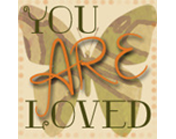Tara, founder of @bpreparedperiod, hosts a monthly #PeriodTalk TweetChat, which focuses on a “commitment to open menstrual conversation and education.”
Today I was privileged to be one of three guests in the #PeriodTalk TweetChat. The topic was Menstruation & The Organizations That Care. The guests were Morgan @Pads4Girls, Celeste @DaysforGirls and Suzan (me) @youarelovedTSS.
A sampling of tweets from the guests follows.
Pads4Girls is a social impact project of @lunapads that supports education for girls in developing nations. We provide girls in need with reusable menstrual supplies so they can attend school during their period. In many communities, disposable products are impossibly expensive, leaving menstruating girls to fend for themselves. Without means to manage periods, girls are forced to stay home from school rather than risk being shamed. Girls who drop out marry earlier, earn less & are at greater risk of developing HIV & dying from childbirth complications. Menstruation is a taboo subject & many girls reach menarche without knowing what is happening to them & why. The UN estimates that girls miss up to 20% off their class time because of their period. @Lunapads has been sending donated cloth pads to NGOs and groups working in Africa since 2001. In 2006 @Lunapads commitment to girls education was formalized with the creation of Pads4Girls. With the help of @lunapads customers, we’ve provided over 3000 girls & women with pads in over 15 countries. We partnered with @TTextiles to create specialized 1-size-fits-all menstrual underwear that hold absorbent pads. We’ve raised enough to provide 10,000 period kits made by @TTextiles to be distributed throughout Malawi in Feb!
You ARE Loved – a nonprofit org focused on raising TSS awareness. It’s impossible to raise awareness about tampon related TSS without talking openly about menstruation. You ARE Loved also provides factual menstrual information and shares about safer menstrual alternatives. In the summer of 2010, 20 year old Amy got sick with what appeared to be the flu – only it wasn’t. Amy died a few days later from tampon related Toxic Shock Syndrome. Her Mom, Lisa, decided to do everything possible to raise awareness so other families would not suffer a similar loss. Over time that vision grew and gave birth to a nonprofit – You ARE Loved. Please take a look at our TSS awareness brochure & share it with others. We are raising awareness about the ONLY fem hygiene product you should worry about causing TSS: traditional tampons. Brands like Kotex, OB, Playtex and Tampax all come with increased risk because they contain viscose. Any other menstrual option is safer when it comes to TSS – organic tampons, pads, & cups (disposable&reusable). It’s important to remember that tweens, young teens and younger women are more likely to develop TSS, and die from it. They are at increased risk because 1) they have not yet developed antibodies and 2) have risky tampon use habits. TSS does not take a holiday. Know the facts. Learn what to do.
@DaysforGirls is a grassroots org of thousands of volunteers worldwide ensuring more dignity, education and health for girls. Mission is to give girls the dignity of quality washable menstrual supplies they can count month after month. Millions of women go without MHM. Our goal to reach every woman in the world by 2022. Collaboration and awareness is key. Receiving MHM and knowledge is powerful. Afterwards women and girls have stood up to exploitation, child trafficking and FGM. In Kisii, Kenya after a DfG distribution and empowerment talk FGM (female genital mutilation) dropped by a reported 30%. Did you know that hundreds of thousands of girls are sexually exploited in exchange for hygiene? It’s hard to imagine. Girls suffer humiliation, infection, exploitation and marginalization just for lack of feminine hygiene. One beautiful, educated 16 yr Kenyan girl said after learning what her period is, “I’m so glad to know. I thought I had HIV.” Imagine having to choose between being exploited to stay in school or being married as an enslaved child bride. @DaysforGirls has sent over 60,000 kits to 30 nations on 5 continents thanks to volunteers worldwide. We also empower local women in the countries we serve to make their own.
Throughout the chat questions were asked to engage and inform TweetChat participants.
Q1: Please share ur name & the number of girls/women you’ve known that’ve been unable 2 afford fem care items (A. 0 B.1-4 C. 5+)
Q2: What percentage of class time do you think girls in east Africa miss due to lack of access to menstrual products?
Q3: What do you think girls in the developing world who lack menstrual pads use to manage their flow?
Q4: Before this tweet chat, how would you rate your knowledge of the need for fem care items abroad?
Q5: Do you know anyone who uses tampons?
Q6: Would u know what to do if u or someone u know got ill w/flu-like symptoms while using or w/in days of using a tampon?
Q7: How familiar are U with the symptoms of Toxic Shock Syndrome? Thx to Suzan symptoms can also be found @ http://t.co/Vl32Peu2
Q8: Do you think lack of MHM (menstrual health management) solutions effect girls in the USA?
Q9: How can you raise awareness about lack of MHM?
If you’ve never participated in a TweetChat, I encourage you to attend the next #PeriodTalk TweetChat on January 11, 2013, hosted by Tara (@bpreparedperiod) of Be Prepared Period. More information, along with the transcript of today’s #PeriodTalk, can be found on the TweetChat page of Be Prepared Period‘s site.
